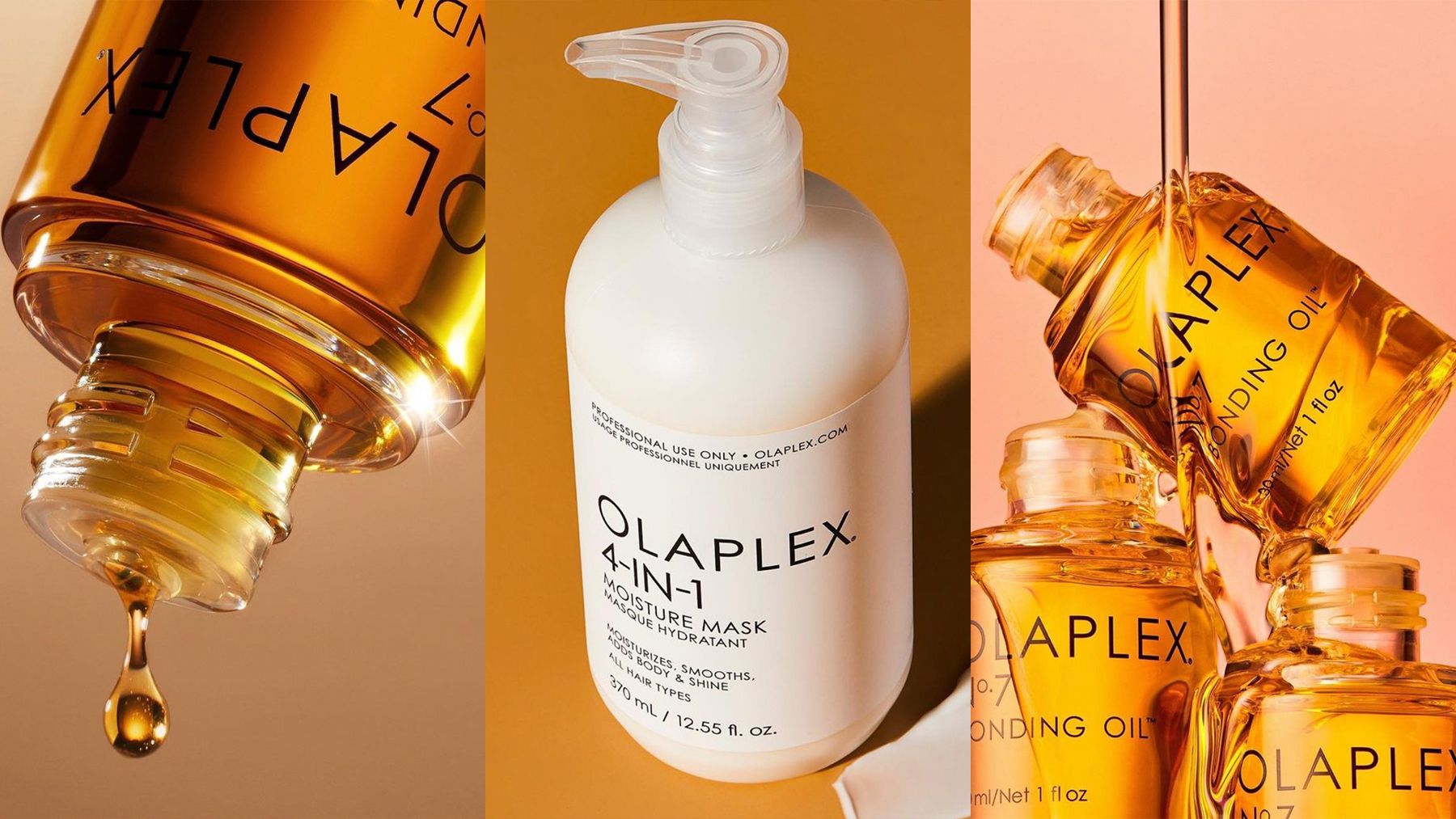
It was the opposite of the celebrity endorsements typical of social media. Earlier this month, Kristin Cavallari went on Instagram to tell her 4.5 million followers why they shouldn’t use one of the trendiest products out there.
“This is not an ad — at all,” the 35-year-old reality-TV actress turned beauty influencer and entrepreneur said in a video. Her target was Olaplex, the hair care brand that has had a rapid rise in popularity thanks in part to rave reviews from celebs like her.
“I was using it too much, and it literally broke my hair,” said Cavallari, who declined to comment for this story. “That has happened to other people, so if you’re using it, just be careful,” she said before recommending another product.
While the company says its offerings don’t damage hair, Cavallari’s post encapsulates the reputational challenge facing Olaplex, a once high-flying brand that has seen its stock collapse 80 percent this year — erasing $15 billion in market value — amid rising competition and a selloff in equity markets.
That drop came after the firm, based in Santa Barbara, California, raised $1.55 billion in an initial public offering in September 2021, which was the biggest in the US consumer-goods sector in two decades, according to data compiled by Bloomberg.
Social media played an outsize role in Olaplex’s success. An unpaid endorsement by Kim Kardashian about a year after the company’s founding in 2014 ignited online attention that it has maintained in its pitch to investors — its filing to go public last year touted metrics such as TikTok hashtag views (317 million).
That accelerant, however, has turned Olaplex into a cautionary tale about the volatile power of social media to lift a brand up — and then drag it back down.
A post on TikTok in February falsely claimed an Olaplex product was being banned in Europe for containing an ingredient that could cause infertility. The company tried to ease fears by saying that it was an inactive ingredient that didn’t pose a risk, and had been removed as a precaution.
But that did little to slow social media chatter.
“You live by the sword, you die by the sword,” said Jim Stengel, a consultant and former Procter & Gamble chief marketing officer. The downside of social media is that “you don’t have control.”
The online disillusionment with Olaplex has continued and shifted to performance, with complaints about hair that feels like straw and worse.
A Facebook group where users discuss hair damage they attribute to Olaplex has amassed 3,000 members since cropping up in July. Published content includes photos of clumps of hair they say they’ve lost and screenshots purportedly showing the company’s response to refund requests. Some have said they’ve spoken with lawyers and are considering legal action.
Olaplex didn’t make any executives available for this story. In a statement, it said tests in-house and by independent labs showed no evidence that the products cause hair loss or breakage. The company declined to share copies of that research.
“We recognise that experiencing hair loss and hair breakage can be distressing, and we empathise with those who have endured it,” Olaplex said. “We remain confident in the evidence showing that Olaplex products are safe and effective.”
Joe Schwarcz, a chemist and director of McGill University’s Office for Science and Society, said he doesn’t see anything in Olaplex that would cause the damage described in the complaints. The company’s bond-building claims make sense in theory, according to Schwarcz.
Leslie Simon, a 43-year-old living in Denver, is a member of the Facebook group and said that when she started using Olaplex’s shampoo and oil at the beginning of this year it initially made her hair stronger. But then her locks started falling out. Doctor visits didn’t yield answers. Bloodwork came back clean. Next, a chunk of hair broke off and her scalp felt like it was burning. Desperate for answers, Simon stopped using Olaplex products in August, and her hair bounced back in a couple of months, she said.
“At one point in the shower, it was like handfuls were just slipping right out of my hair,” Simon said. “They need to be accountable.”
Olaplex is often credited with creating a new category of products that repair damaged hair. Sales hit $150 million in 2019 when private equity firm Advent International led an acquisition of the company, touting it as one of the “highest-engagement hair care brands on social media.”
Stylists were the initial fans, but when salons closed during the pandemic, Olaplex’s growth accelerated as sales to consumers through retailers and its website jumped. With annual revenue on pace to more than double to nearly $600 million in 2021, the company went public. (Advent, which declined to comment, still owns about 77 percent of the shares, according to filings.)
Analysts liked Olaplex’s patented formulas and devoted customers. JuE Wong, a veteran of the cosmetics industry who joined in 2020 as chief executive officer, didn’t waste time reminding investors of the brand’s online buzz, saying during her first earnings call that it was the “No. 1 prestige hair care brand on social media.” The company’s market value surpassed $19 billion at the start of this year.
But the honeymoon didn’t last long. Piper Sandler analyst Korinne Wolfmeyer conducts a quarterly survey of Olaplex-certified hairstylists. In September, she flagged that about 40 percent of stylists had heard negative reviews from clients, mainly regarding dryness and breakage. She downgraded Olaplex’s shares to the equivalent of a hold rating later that month, citing misinformation and competition as increasing risks.
The next month, Olaplex slashed an annual sales forecast it had reiterated 10 weeks earlier and cast a wide net of blame, including competition and a weakening economy. The stock sank by 57 percent in a day to $4.24 — about one-fifth of its IPO price. Analysts now expect sales to decline 20 percent this quarter.
Piper’s latest survey showed that the percentage of respondents ranking Olaplex as their top hair treatment also dropped, while competitors such as K18 gained. “We are starting to struggle to view it as the clear category leader it once was,” Wolfmeyer wrote in a research note this month.
To better inform consumers, Olaplex plans to send representatives to the 75 top-performing stores at retail partners Sephora and Ulta. (The brand is in a total of about 1,800 locations at those chains.) It’s to “really debunk any myths, help educate the beauty consultants and also engage with consumers,” Wong said at an investor conference last week.
Social media has become an essential part of marketing, with brands paying so-called influencers to promote products online. If done well, that paid content leads to others sharing and creating their own posts. That multiplier effect helped Olaplex keep a lid on ad spending. But the risk is that online buzz is volatile. Olaplex pointed out as much in its IPO filing, saying that failure to respond to the “accelerated impact of social media could adversely impact our business.”
The company, however, does have room to win over consumers in the US, according to a recent survey by Morning Consult commissioned by Bloomberg. Among adults ages 18-34, about 60 percent didn’t know the brand or had no opinion of it. Meanwhile, only 11 percent had an unfavourable view.
An underlying problem is that there’s a mishmash of advice about how to use Olaplex’s offerings. The company says that its products repair all types of hair damage, and that its lineup is suitable and beneficial for all hair types.
Meanwhile, interviews with a handful of clerks and stylists at stores that sell the brand provided diverging advice. Some advised anyone could use the treatments, while others cautioned that only people with chemically treated hair should consider them. One said that shoppers were overusing the products.
Holly Reardon, 25, had been bleaching her hair since high school when she saw women online touting Olaplex’s ability to transform their locks. She followed advice from social media and began leaving Olaplex’s No. 3 treatment, its best-selling item, in her hair for a few hours at a time. The company recommends using the product for at least 10 minutes, and that it’s more effective when left on up to 90 minutes.
Reardon, who also used other Olaplex products, noticed an improvement but after a year said her hair felt like “hay.” In March, she posted a video on TikTok, where she has 147,000 followers, saying, “I have a very controversial statement, but I’m just gonna go for it. I think Olaplex ruined my hair.”
The Boston resident stopped using Olaplex and focused on hydrating products, which along with a haircut and returning to her natural brunette hue have helped. After her Olaplex experience, she’s also now a bit more skeptical.
“I definitely think social media can lead people astray.”
By Katrina Lewis and Daniela Sirtori-Cortina



